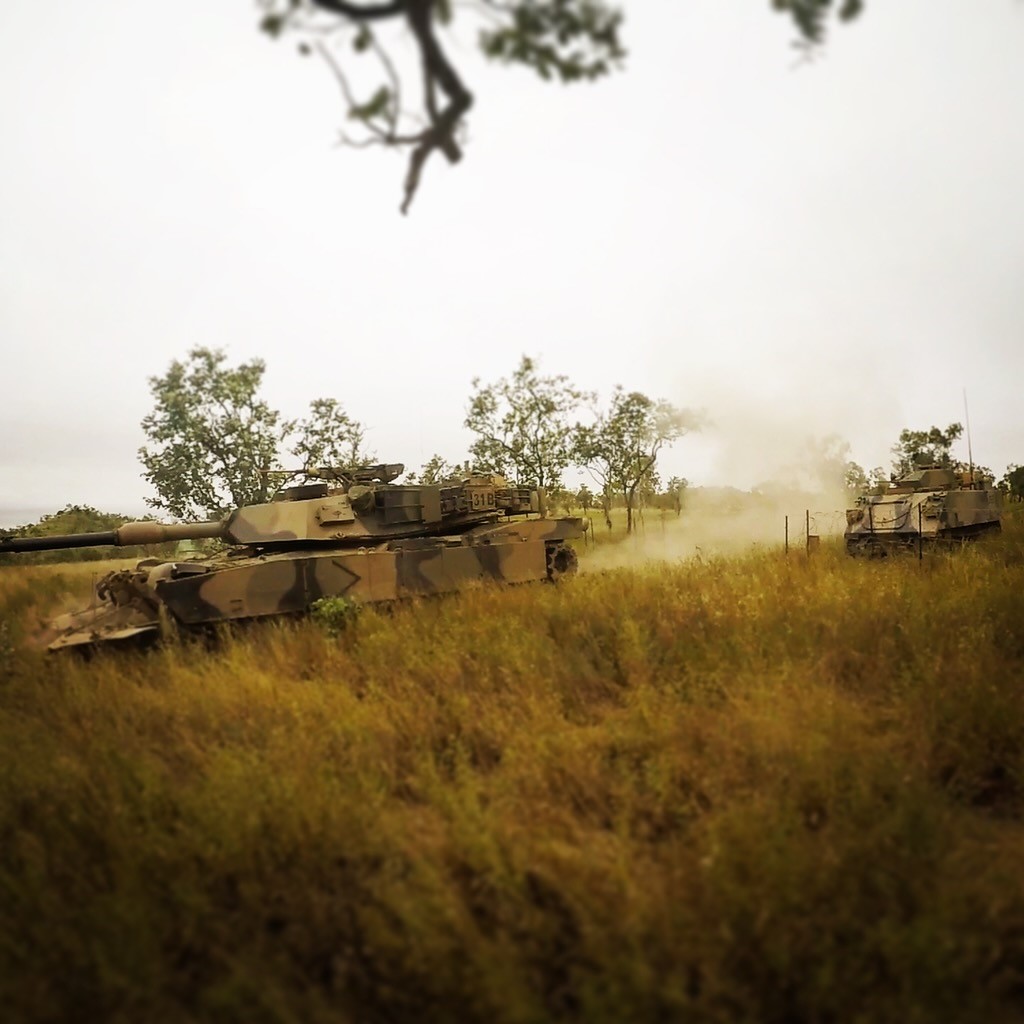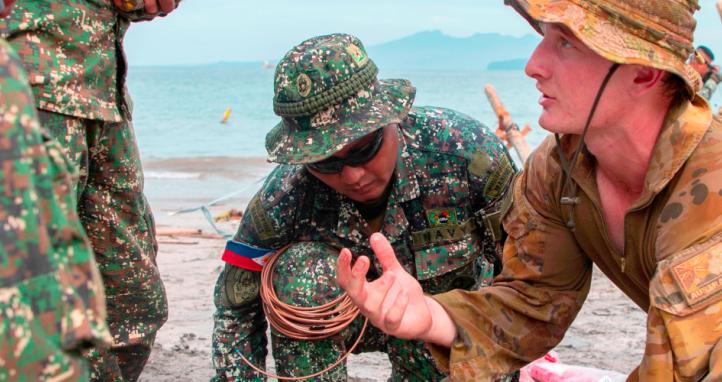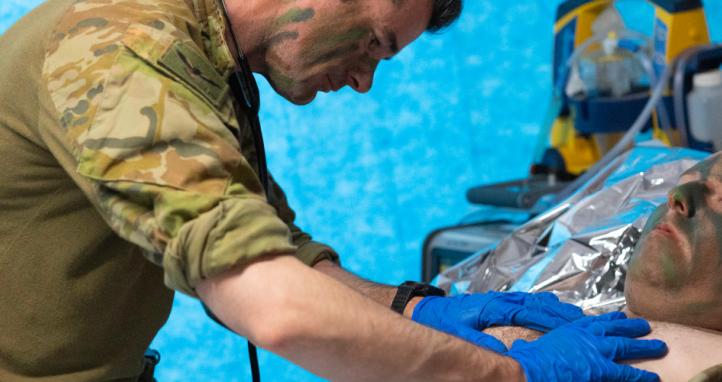'Time spent in reconnaissance is seldom wasted'
– Field Marshall Erwin Rommel
Since the dawn of warfare, the importance of reconnaissance has been evident. There are countless historical examples demonstrating a direct correlation between successful reconnaissance and victory on the battlefield. The acquisition of information on nearly all aspects of our enemy provides us with a decisive advantage, allowing us to identify their vulnerabilities in order to exploit their weaknesses whilst shielding our own critical vulnerabilities. The relevance and importance of reconnaissance in all forms of warfare will not change into the future. What will change is how reconnaissance is conducted as military technology progresses. It is of upmost importance that we, as members of the Profession of Arms, educate ourselves and our peers on the importance of reconnaissance now and into the future in order to remain a relevant and effective fighting force. This article will explore what Engineer specific reconnaissance within the mechanised space should look like in 2030. It will focus specifically on obstacle reconnaissance, within the Intelligence Preparation of the Battlespace (IPB) phase of a combined arms obstacle breach, as this is the most likely tactical task required of mechanised combat engineers. It will then explore how Projects LAND 400, LAND 8160 and other technological advantages, namely the use of Unmanned Aerial Vehicles (UAVs), will shape the way future reconnaissance is conducted, through analysing both their advantages and limitations. The article will conclude with a summary of the points presented and recommendations leading into the future.
Background
For centuries, reconnaissance belonged to the light horse cavalry. The cavalry’s mobility, longevity and speed afforded a critical advantage when undertaking surveillance and reconnaissance of the enemy’s size, disposition and morale[1]. This principle did not change post the industrial revolution, with light tracked and wheeled reconnaissance vehicles, as well as integrated aerial assets, once again dominating the reconnaissance space. The introduction of LAND 400, and the proposed infantry fighting vehicle (IFV) (which Combat Engineer Regiments will acquire during Phase 3 to replace the ageing M113AS4 fleet) will provide the mobility, survivability, speed and technology to allow engineers the ability to conduct our own reconnaissance under the protection of armour, with greater mobility and firepower than previously experienced within the Australian Army. It is also important to note that LAND 400 is the biggest and most expensive acquisition project in the history of the Australian Army, costing between $14 and $20 billion over 15 years with an expected delivery of 611 armoured vehicles[2].
In order to lay the foundations of mechanised engineering prior to delivery of LAND 400, it is of upmost importance that we identify the likely reconnaissance tasks that a mechanised engineer callsign will carry out. The weight of the new Rheinmetall Boxer is over 35 tonne, with the IFV likely to weight closer to 40 tonne[3]. Both platforms tower over the ageing Australian Light Armoured Vehicle (ASLAV) and M113 fleet in size and weight comparison, promising improved mobility, protection, firepower and a technological suite current with global software standards. The size and weight of our LAND 400 vehicles will likely constrict their deployment to only war-like operations, due to the impracticality of manoeuvring such large armoured vehicles within urban areas on stability or humanitarian missions which historically occur in underdeveloped nations with sub-par infrastructure. Therefore, the breadth of engineer reconnaissance will likely be limited for units allocated with the new IFVs and Under Armoured Breaching platforms. It is likely that mechanised engineers (also encompassing engineers tasked with manning and operating under-armour breaching platforms) will focus all reconnaissance efforts on obstacle reconnaissance to aid with combined arms breaching.
Obstacle breaching
The combined arms obstacle breach has been, and will continue to be, one of the most complex and dangerous combat tasks required of engineers in the battlespace. Doctrine states that engineers should expect to suffer between 60% - 70% casualties during the conduct of a breach, far exceeding the typical 30% casualty rate accepted by commanders prior to being deemed combat ineffective[4]. In order to mitigate such high casualty rates, it is vital to feed information from the battlefield thorough pre-H engineer reconnaissance during IPB in order to enable successful deliberate planning. Obstacle Intelligence enables the commander's staff to answer key Commanders Critical Information Requests (CCIRs) prior to conducting the breach and should be treated as a prerequisite condition to allow for H-Hour to be set. In the same way that the breach commander would not advance to the obstacle site until suppression and obscuration has been achieved, the overall commander should not step off from the form up position (FUP) until they have a clear understanding of the exact location and composition of the obstacle which they intend to breach.

The responsibility to obtain credible and accurate obstacle intelligence does not currently belong solely to engineers, nor will it in the future. In 2030, formation-level reconnaissance assets, particularly cavalry with their new and more capable Boxer, will be vital in identifying obstacles well in advance to the main body’s arrival. Identification of an obstacle by a formation-level reconnaissance asset should be the trigger to the Combat Team commander to commence planning for the breach in its early stages; this should trickle down to the engineer commander who can issue relevant warning orders in preparation for command generated reconnaissance. This will also be the precursor to a formal request for advanced under armoured breaching assets to be brought forward if required.
The engineers' role as the breach force, responsible for reducing obstacles during the breaching fundamentals of SOSRA (Suppress, Obscure, Secure, Reduce, Assault), will not change in 2030 due to LAND 400 and LAND 8160. In fact, our involvement within combined arms obstacle breaching will likely increase as the new capability will provide better a opportunity to conduct realistic breaching on exercise in preparation for operations. As a result, engineers will still be expected to conduct obstacle reconnaissance; it is how we conduct that reconnaissance which is likely to change.
Integrating future capabilities
The size, noise, dust and heat signature of the new LAND 400 suite of vehicles will overtake the current M113 signature. As a result, mechanised engineer commanders will be forced to site Administration Areas (AA) several kilometres from the obstacle in order to remain underneath the detection threshold during an obstacle reconnaissance. This is where the rapidly evolving technological advances in Unmanned Aerial Systems (UAS) will become a key factor. Mechanised engineers will be able to sight an AA in a defendable location, utilising the 30mm cannon and Anti-Tank Guided Missile (ATGM) to provide organic security. Once security is set, an engineer piloted Unmanned Aerial Vehicle (UAV) can be launched to conduct reconnaissance on the obstacle. UAVs are already technologically advanced enough to take millimetre precise measurements of objects on the ground[5]. By 2030, it is realistic to expect that UAVs will have the ability to detect and identify the type of surface or buried mine, the exact amount, and their disposition to a ten figure grid reference, as well as observing other key obstacles within a target panel. UAVs will provide a complete picture of the obstacle during reconnaissance with likely software technology to translate what the UAV has detected to a digital reconnaissance report, able to be accessed by all blue force actors within the Area of Operations (AO) instantly.
The integration of technologically advanced UAVs with smart software into the task will make the process of conducting engineer reconnaissance on obstacles faster, more reliable, safer and quieter than ever before. This translates to a lower risk of detection and compromise whilst conducting the reconnaissance. UAVs will be able to provide more reliable and greater intelligence to aide with deliberate planning, which should translate to more successful combined arms obstacle breaching, resulting in fewer casualties sustained during the breach.
The risk of counter-capabilities
When it comes to military technology or strategies it is important to remember that with every advance there is often an equal or greater advance in order to counter them. First came the sword countered by the shield, the bow countered by the gun, the Maginot Line countered by manoeuvre warfare, namely Hitler’s Blitzkrieg. It would be naïve to think that our technological advances in the form of armoured vehicles and UAS will not be countered. Most modern militaries are already equipped with sophisticated, man-portable, fire-and-forget anti-tank missiles, much like Australia’s own Javelin[6]. As UAVs become cheaper and more readily available, and as software further develops, the likelihood of swarms of hunter-killer drones scanning the battlespace and targeting armoured vehicles autonomously is greatly increased. Greg Rowland, a retired Australian Army Officer and former Project Director in LAND 400, states: 'Drone attacks on combined arms teams may amount to the old axiom – divide and conquer – depriving combat teams of key enablers at a critical time(s) in battle[7].' The future battlefield will prove be a tremendously lethal space for armoured warfare, especially key enablers including mechanised combat engineers.
UAVs are also not resistant to countering, with even the most technically advanced stealth drones being able to be successfully targeted and destroyed by inferior militaries. A prime example of this occurred only a month ago when Iran destroyed a US RQ-4A Global Hawk drone (one of the most technologically advanced spy drones to date) over the Strait of Hormuz[8]. Advances in frequency jamming will also present a sizeable dilemma for operations of UAVs in the future, with conventional armies possessing the ability to scramble the software of drone’s mid-flight, rendering them ineffective to conduct intelligence gathering or offensive operations. An example of this also occurred recently in the Strait of Hormuz with the U.S. Marine Corps utilising their new Light Marine Air Defence Integration System (LMADIS) to successfully jam the signal of an Iranian Drone less than a kilometre away from USS Boxer, leaving it to the mercy of physics and the inevitably pull of gravity[9].
Although it is healthy to facilitate discussion in regards to the future of warfare it is important to remain grounded in the present in order to identify what actions we can be taking now to set the conditions for success in the future. Technology will play a vital role in how we conduct reconnaissance, yet it is still important to have a firm grasp of the principles of traditional dismounted engineer reconnaissance, because in a battlespace full of technology the most effective means of gathering intelligence may be through old fashioned dismounted patrolling in order to remain undetected and untargetable.

Pulling the future towards us
The combat engineer regiments should start preparing for LAND 400 and LAND 8160 now. Focus should be placed on Standard Operating Procedure (SOP) development, despite the M113 and Boxer being vastly different platforms. The principles of their employment will not change dramatically, and by trialling SOPs now we will significantly reduce friction in the future. We should continue to invest time and effort into training engineer specific reconnaissance and work hand-in-hand with our combat teams within the Brigade to educate them on how important engineer reconnaissance can be, ensuring mission success during the combined arms obstacle breach. This can be achieved through Professional Military Education (PME) sessions and on exercise through practical trial, when the commander can witnesses the rewards of allocating engineers sufficient time to conduct reconnaissance during the IPB phase of their deliberate planning. Most importantly we must continue to invest in those soldiers and Sappers under our command by developing them. This can be achieved through courses, PME, exposure on operations and exercises, international engagements and well planned and effective training.
In conclusion, technological advances, including the roll out of LAND 8160, LAND 400 and the advances in UAS technology, will open new and exciting avenues to conduct engineer reconnaissance in the future. The ability to provide organic security and protection, whilst conducting detailed and accurate obstacle reconnaissance through the hardware and software advances in UAS, will promote better planning and ultimately result in fewer friendly casualties at the obstacle breach site. It is important that we discuss not only the benefits in which these new capabilities will afford us, but also their limitations and restrictions. The Australian army will remain a small army in comparison to global actors, both within our immediate sphere of influence and abroad. We must maintain what makes us such a potent small army, continuing to focus on adaptability, rapid decision making and decisive leadership amongst all ranks in order to maintain our status amongst both allies and adversaries as a ferocious fighting force. We must not lose focus of basic dismounted intelligence gathering tactics, as it is likely that technological advances in equipment and systems against will be countered by near-peer adversaries to the point of making them redundant. Most importantly we must continue to focus on developing ourselves and our subordinates in the art of intelligence gathering through engineer reconnaissance now, to reap the rewards in the future. It is tactical intelligence, not necessarily numbers, technology, firepower or tactics, that has the most decisive impact on the battlefield. History has repeatedly demonstrated that numerically inferior forces, even with less capable equipment and technology, can win when armed with accurate intelligence that their leadership can act upon[10].




